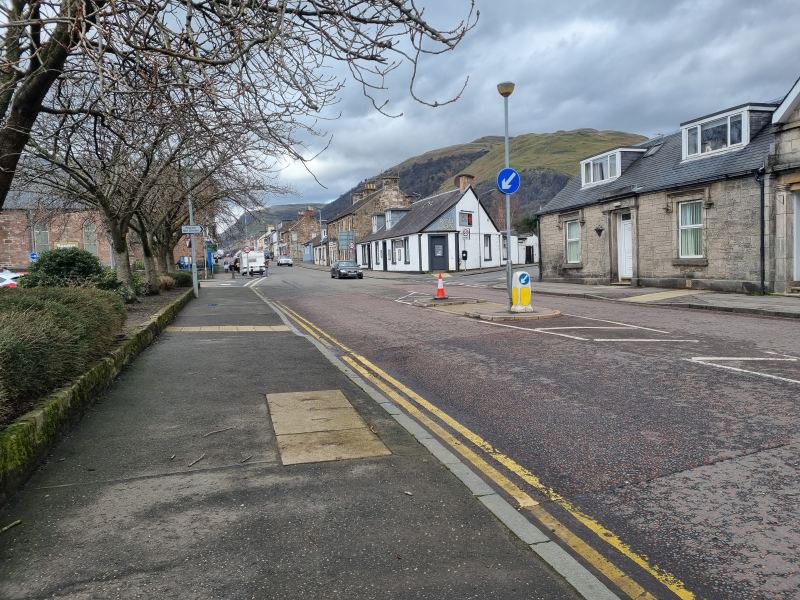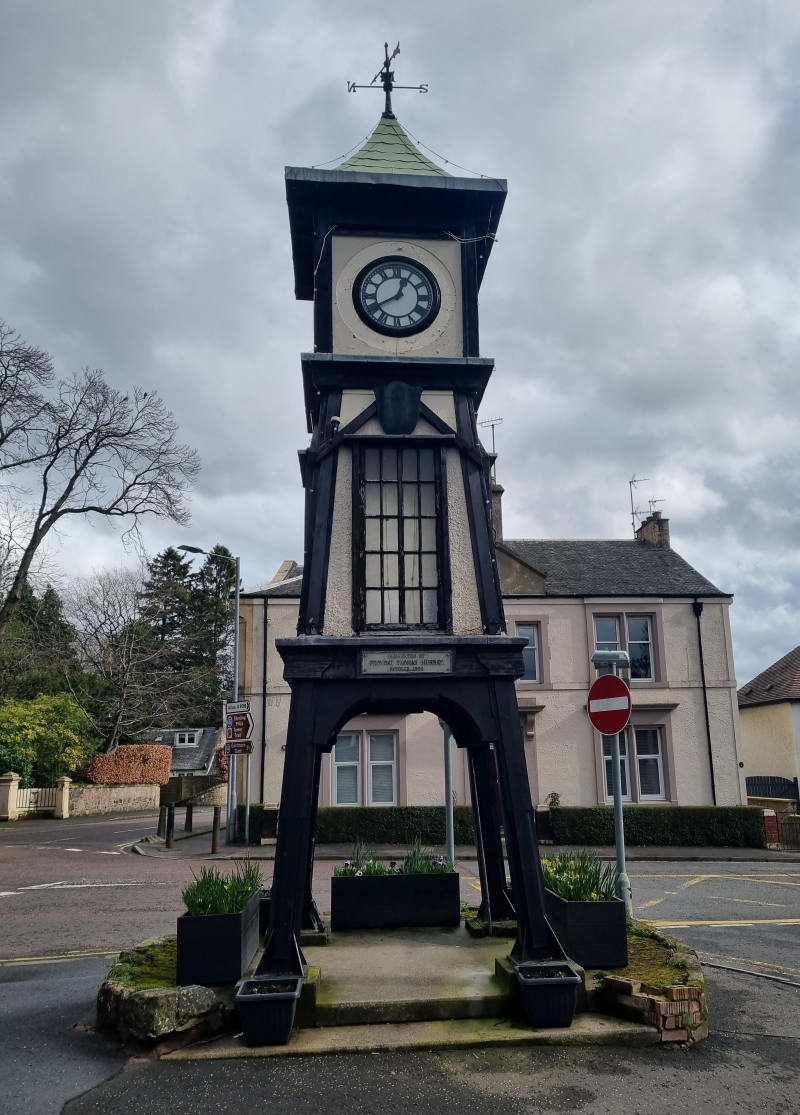Tillicoultry is one of the Hillfoots villages of Clackmannanshire, with a 2016 population of around 4650. The town owes its name to the Scottish Gaelic for "hill in the back land" and in 1195 it was recorded as Tulycultri. The former mining villages of Coalsnaughton and Devonside lie to the south, whilst Alloa is 4 miles to the southwest.

Tillicoultry, A91
The Hillfoots villages are strung along the A91 road, which connects Stirling with St Andrews on the Fife coast. The estate of Tillicoultry was taken from Aleumus de Meser in 1261 by Alexander III for failure to render due feudal services. The estate had originally been received by de Meser's father, also Aleumus, from Alexander II. It was then granted to William Count of Mar and remained in possession of the Mar, and then by marriage of Margaret, Countess of Mar, to William Douglas, 1st Earl of Douglas, the Douglas family until 1483, when it changed hands to the ancestors of Lord Colville of Culross. By 1634 it was sold to Sir William Alexander of Menstrie (later 1st Earl of Stirling). Between 1644 and 1840, ownership of the estate changed hands frequently. The origins of the village lie where the old road to Stirling crossed the Tillicoultry Burn. There are records of a parish church existing in Tillicoultry from 1639, and knowledge of cloth manufacture dating from the 1560's. Traces of a Druid circle, sixty feet in diameter, were found in the eastern area of the parish at the end of the 18th century. Tillicoultry burn runs off the Ochils and down through the glen into west of the village and onward to the river Devon to the south.
The burn provided an attractive source of water for the textile industry that once operated in Tillicoultry, the water being used for the washing and dying of wool. During the early 18th century, a cloth known as Tillicoultry Serge was manufactured by weaving worsted with linen. By the time of the industrial revolution the burn was a recognised source of power, with the first mill being established in the 1790s.
Many more textile mills were built along the burn side. By the 1830s, steam powered mills were introduced and by 1870 there were 12 mills employing over 2000 people. As the industry expanded, more workers were attracted to the village. The population of the parish, which had stood at 916 in 1801, had grown to 4,686 by 1851.
Tillicoultry was also close to coal mining works, and these also provided local employment. Textile mills and coal mines remained the biggest employers of the local population until the first half of the 20th century. Tillicoultry Burgh was created in 1871 to help alleviate problems such as overcrowding and high infant mortality in the area, it lasted until 1975 when it disappeared as a result of local government re-organisation. Around 1930, one of the first bus stations in the country was built at Murray Square to serve the eight bus services which terminated in the town. The original glass and cast-iron shelters were replaced by a modern shelter some time ago.
The Harviestoun estate, where Archibald Tait (1811–82), Archbishop of Canterbury, spent much of his boyhood, lies East-North-East of the village. Robert Burns visited the estate in the summer of 1787 and during his stay he wrote 'The Banks of the Devon' and 'Fairest Maid on Devon Banks'. A commemorative cairn at the roadside, near the east lodge to Harviestoun, marks this event.
In 1851, due to the importance of Tillicoultry as an industrial centre, it became the first Hillfoots village to have a rail connection. Tillicoultry railway station, on what eventually became known as the Devon Valley Railway, was situated opposite Devonvale Hall, and closed in 1964.
In 1921 Samuel Jones Limited established a paper mill at Devonvale, the current site of the Sterling Furniture business. In 1926, 33 people were employed at the site and the firm returned its first profit. By 1936, 238 staff were employed by the company. Sydney Platfoot was appointed Managing Director of the Devonvale works in 1922, he later went on to become town provost from 1930 to 1936. In 1964, the company merged with Wiggins Teape and by 1967 employed a fifth of the local working population.
Tillicoultry Quarries Ltd, as the name suggests, was established in 1930 by R.W. Menzies at Craigfoot Quarry in Tillicoultry and remains 100% owned by the Menzies family. Due to planning restrictions, quarrying no longer takes places in Tillicoultry; the company's head office is based in Kincardine. Quartz-dolerite was first extracted in 1930 from the now inoperative Craigfoot Quarry, however quarrying had taken place on a smaller scale at the site since 1880.
As the textile and coal mining industries declined, Tillicoultry became a popular commuter town. Many of the mill buildings have been converted into residential accommodation.
The Clock Mill, built by James and George Walker of Galashiels, which is situated at the top of Upper Mill Street. The last production of textiles in the mill was by D. C. Sinclair & Son. They wove high quality mohair goods among others. It was turned into a museum, then a business centre and now residential flats. The village developed on a herring-bone pattern north of the main road. A series of diagonal streets, mostly lined with cottages, lie between the High Street and Walker Terrace, which run parallel. The eastern area of the village has more recent residential developments, dating from the 1940s to the present.
Tillicoultry is perhaps now best known for its large retail outlet, Sterling Furniture, as well as for the adjacent Sterling Mills shopping centre.
The Devon Way pedestrian and cycleway links eastward to Dollar. The village also has a Primary School, which is situated next to the Fir Park artificial ski slope. For secondary school aged children, the closest school is Alva Academy. The town can also boast several country walks and a decent high street experience.
One landmark is the town clock, located at the bus station on Murray Square.

Clock at Murray Square
References:
